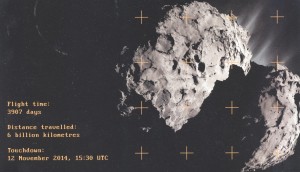By The Metric Maven
Bulldog Edition
Skeez was a person who seemed to be born interesting. He obtained his nickname from a character called Skeezix in the comic strip Gasoline Alley. The comic strip itself is unusual in that Skeezix arrives as a baby on a doorstep and ages as time goes on. Skeez spent much time at his cottage on the shore of a nearby lake. One day I noticed a new bust among his eclectic collection of objects; it was Charles Dickens. Skeez then told me that Dickens had a story about an innkeeper who was so cheap he counted the number of beans he put into his soup, and that’s where the term “bean counter” arose. He was as close to a polymath as I have ever known. When he passed away I ended up with small gargoyles that he had brought back from France during World War II. I have an African shield with a weapon which was used to kill tigers, as well as other books and notes he left behind.
Recently I ran across a an RCA Radiotron Reference Book from 1940 which Skeez had owned. Inside, it contains a small snapshot of how the metric system was viewed by electrical engineers in 1940. It appears that US engineers saw the metric system as a simple drop-in substitute for Olde English measures. For instance, under pressure they equate pounds per square inch to Kilograms per square centimeter. No pascals. The equivalence of kilograms (mass) with pounds (force) is a strange misunderstanding in a reference like this—unless they meant Kilogram-force. It is clear that again Americans see the centimeter as a pseudo-inch and just substitute away without any measurement introspection. I’ve not found a millimeter mentioned in this reference.
It also has a list of miscellaneous conversions that have a couple of interesting aspects. First I had no idea there was a unit of metric horsepower. Apparently notion of horsepower was still considered so important in 1940 that a metric version needed to be defined. Apparently metric horses have less strength than Olde English horses. The definition does not seem to even involve a horse:
DIN 66036 defines one metric horsepower as the power to raise a mass of 75 kilograms against the earth’s gravitational force over a distance of one metre in one second;[13]
The other odd aspect is that meters show up with an er ending, but litre is spelled with re. I’ve often wondered when it was decided, and by whom that in the US we would use er rather than re. Here the situation is mixed.
What really caught my attention, and is the actual subject of this essay, are the tables on wire. American copper wire is designated in American Wire Gauge (AWG). I have made my view known concerning the vacuous non-term gauge in a previous essay. We note that along the left column is the AWG number. AWG was first used as a designation in 1857. The diameter of the wire is then given using the informal feral unit known as the mil. A mil is a slang term for one-thousandth of an inch—at least in the US. In metric countries it’s a slang term for a millimeter as I understand it. As the gauge number increases, the diameter decreases.
There is also a column to the right of the diameter of the wire in mils, which is the area in circular mils. Let’s take an easy example, say AWG 10, which is a solid wire with a diameter of 101.9 mils. Now we know the area of a circle is π multiplied by the radius squared. The answer to the computation is 8155 square mils. But wait–the value in the area column is actually 10 380 circular mils. Well, that’s because apparently our engineering founding fathers, in their infinite wisdom, decided that dividing the area up into the number of circular areas of one mil was the best way to do it. To get circular mils you just square the wire diameter in mils. This produces a value that is not directly usable for any common engineering calculations. The resistance of a solid wire is proportional to the cross-sectional area, and circular mils are essentially a gauge number for area and not a defined area. We have inherited this strange way of determining the area of solid copper wire without questioning its sanity. It also illustrates once again that our Olde English set of measurements has nothing in common with a system. To make matters worse, Wikipedia decided to use the term kcmil for kilo-circular-mil in their wire table. I wish metric prefixes would only be used with metric units, and not feral ones, or medieval ones.
Another page in the RCA Radiotron Reference Book has the number of winding turns which make up a linear inch. For example, the Brown and Sharpe (i.e. AWG) Gauge Number is given on the left. We then see that for enamel coated wire one needs 7.6 turns of AWG 8 wire to have a coil which is one inch in length. This data is useful for computing how long an inductor might be for an electrical engineer.
If one were rationally using the metric system, one could easily compute any of these values from a table which gives the wire diameter in millimeters and the area in millimeters squared. If the wire manufactures were to use preferred numbers with metric diameters, then it would simplify matters further. Their would be no more indirect designation of sizes with meaningless gauge numbers. The values would be directly understandable in millimeters. Let’s suppose we have a wire of 1.25 mm diameter, we would know immediately that ten turns is 12.5 mm. We could use AWG 16 which after we consult the table is seen to have a diameter of 50.8 mils. We then know that ten turns is 500.8 mils, divide by 1000 to get the value in inches or 0.5008 inches. Alternatively, we could have started with a direct metric designation of 1.291 mm and ten turns is immediately seen to be 12.91 mm. Starting with the metric diameter, one knows this is the width of a single turn. Using this, one can quickly evaluate 1/1.291 mm on a calculator which is 0.775 turns per millimeter. To get 10 millimeters it would take 7.75 turns. start with a metric wire diameter and one can quickly compute anything one needs–using common mathematics.
Incidentally the gauge designations for copper wire are not standard across types of wire, so one can’t be certain what diameter other wires might be when given a gauge number. Clearly, if the diameter of a wire in milimeters is given, or another appropriate metric length (e.g. micrometers), this allows one to immediately compute any appropriate parameter. Here is an illustration from a vendor who sells wire in Australia:
The wire industry in the US has been using this kludged up system since 1857 and has done nothing to introduce reform. This clearly shows to me that one needs to have a government mandate, like that implemented by Australia, which mandates metric. The voluntary part for industry is how they will introduce metric. If they have any sense they would take the opportunity to reform their industry with preferred numbers, or in some other rational manner. Standard DIN Sizes using ISO6722 in terms of mm² look like a good idea to me. But how they would implement the change would would be up to them—and in ‘merica they just might use “soft” metric and preserve familiarity over simplicity along with 19th century measurement practice. Until then, this mess is hard wired in the US.
If you liked this essay and wish to support the work of The Metric Maven, please visit his Patreon Page and contribute. Also purchase his books about the metric system:
The first book is titled: Our Crumbling Invisible Infrastructure. It is a succinct set of essays that explain why the absence of the metric system in the US is detrimental to our personal heath and our economy. These essays are separately available for free on my website, but the book has them all in one place in print. The book may be purchased from Amazon here.

The second book is titled The Dimensions of the Cosmos. It takes the metric prefixes from yotta to Yocto and uses each metric prefix to describe a metric world. The book has a considerable number of color images to compliment the prose. It has been receiving good reviews. I think would be a great reference for US science teachers. It has a considerable number of scientific factoids and anecdotes that I believe would be of considerable educational use. It is available from Amazon here.

The third book is called Death By A Thousand Cuts, A Secret History of the Metric System in The United States. This monograph explains how we have been unable to legally deal with weights and measures in the United States from George Washington, to our current day. This book is also available on Amazon here.











